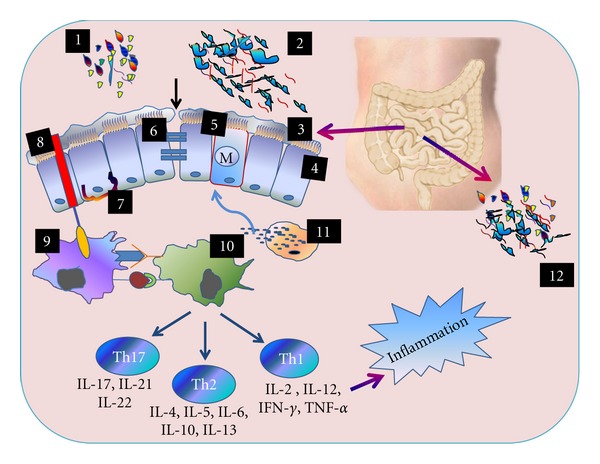Figure 1.

(1) Commensal bacteria (2) Pathogenic bacteria (3) Mucus layer (4) Intestinal epithelium (5) Peyer's patch (6) Tight junction protein (7) Paneth cell (8) Toll-like receptors (9) Dendritic cell (10) T cell (11) Degranulation of mast cells (12) Small intestinal bacterial overgrowth. The intestinal microbes may form a natural barrier to pathogenic bacteria. Therefore, any qualitative or quantitative change in the gut microbiota leads to the instability of the gut microbial ecosystem. It facilitates the entry of pathogenic bacteria and allows them to adhere to the wall of the intestinal epithelial cell. Degranulation of mast cells releases substances that increase the permeability of mucosa resulting in a reduction in the integrity of the tight junctional protein complex. Luminal bacteria or bacterial products such as peptidoglycans and lipopolysaccharides interact with Toll-like receptors on dendritic cells and macrophages. After processing, these cells present the antigen to T cells leading to the production of cytokines, chemokines which cause inflammation in the gastrointestinal tract. Paneth cells are found throughout the small intestine and secrete alpha defensins and lysozyme which, not only eliminate pathogenic bacteria, but also maintain the integrity of the intestinal membrane. Lymphocytes are found in a more organized structure called lymphoid follicles. M cells play an important role in transporting bacteria and microbial particles from the lumen to the lymphoid follicles. The areas around M cells, called Peyer's patches, facilitate the mucosal immune response.
